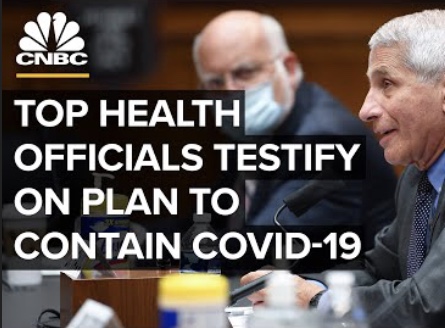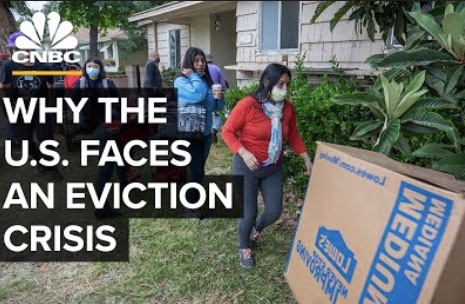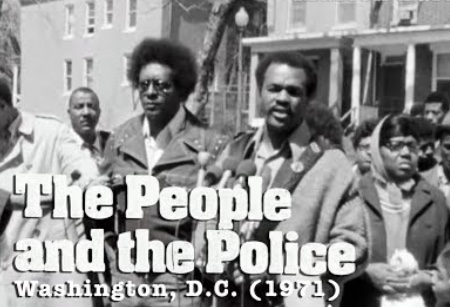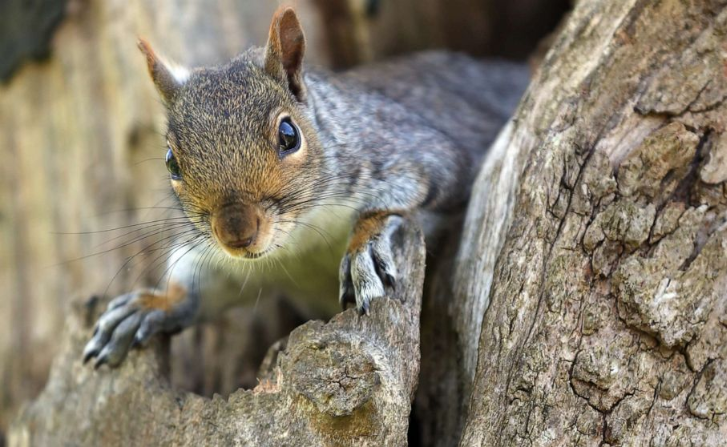Georgia camp hit with coronavirus outbreak didn’t require masks
Test results were available for 344 people and 260 of them — about three-quarters — were positive.
A Georgia overnight camp hit by a coronavirus outbreak took many precautions but didn’t make campers wear masks or have proper ventilation in buildings, according to a government report released Friday.
The camp followed disinfecting rules and required staff to wear masks, but campers didn’t have to wear face coverings. Health officials said “relatively large” groups of kids slept in the same cabin where they regularly sang and cheered, likely leading to spread.
Nearly 600 people were at the overnight camp, which was not named in the report by Georgia health officials and the Centers for Disease Control and Prevention. Media outlets reported a large outbreak occurred at the time at a YMCA camp at Lake Burton in Rabun County, near the state’s northern border with North Carolina.
Campers ranged in age from 6 to 19, and many of the staffers were teenagers. Cabins had between 16 to 26 people. The report said this was “relatively large” but doesn’t clearly say if it was too many. Health investigators did fault the camp for not opening enough windows and doors to increase circulation in buildings.
The report said a teenage staff member developed chills on the evening of June 22 and left the camp the following day.
The camp began sending campers home two days later when the staffer got a positive test result for coronavirus. The camp notified state health officials and closed the camp on June 27.
Test results were available for 344 people and 260 of them – about three-quarters – were positive.
The percentage of campers infected was higher among younger kids than older kids, the report found. It also was higher in kids who were at the camp for longer periods of time.
Officials recorded information about symptoms for only 136 kids. Of those, 100 reported symptoms – mostly fever, headache and sore throat.
Inslee requests federal funding for National Guard through end of year to help with COVID response
OLYMPIA — Gov. Jay Inslee has asked the federal government to continue paying for the use of National Guard soldiers through the end of the year to respond to the coronavirus pandemic.
Inslee’s request Monday comes as cases of coronavirus have begun to climb across Washington and hospitalizations involving the virus have also started creeping back up.
The governor’s request, made in a letter to the U.S. Department of Defense, seeks an extension through Dec. 31 of federal funding currently paying for the more than 1,000 guard members assisting with various parts of the COVID-19 outbreak response.
“They are critical to our efforts to slow the spread of the virus by supporting COVID-mapping missions, assembling test kits, and operating community-based test sites,” Inslee wrote in the letter.
“Additionally, uniquely skilled National Guard planners are assisting my COVID-19 food security team and other state agencies to ensure that we meet the health and welfare needs of Washingtonians through our phased re-opening plan,” Inslee added.
The current federal funding is set to expire Aug. 21, according to Inslee spokeswoman Tara Lee.
Even without federal reauthorization, the state could still deploy Guard members at the request of local governments, Lee wrote in an email.
“However, they’d need to be on State Active Duty and the cost burden would shift to the state and local level,” she wrote.
Guard members have been a part of Washington’s pandemic response since early April.
At that time, 130 members deployed to help staff food banks in King, Pierce, Chelan, Franklin and Walla Walla counties. In Issaquah, for example, Guard members unloaded deliveries, repackaged food and then staged 44-pound boxes so food supplies were ready for distribution.
The state has also trained more than 720 National Guard members to help with contact tracing, also known as COVID mapping. Those members call people who have tested positive for the virus, to learn who they have been in close contact with.
Then, in an effort to halt the spread of the virus, contact tracers call those people and encourage them to get tested and to quarantine for two weeks.
In her email, Lee wrote that some food banks are now able to have volunteers return, which could cut down on the need for Guard members in that role.
But, “we anticipate more will be needed to conduct the covid mapping mission,” Lee wrote, and, “Test kit assembly and the operation of community based test sites will be an ongoing need.”
Also on Monday, Inslee participated in a call between governors and members of President Donald Trump’s coronavirus response efforts, including Vice President Mike Pence. The call came after Trump on Saturday appeared in public for the first time wearing a mask.
On the call, Inslee told Pence that he appreciated that the president wore a mask, according to an account of the call provided by Inslee’s office.
Pence responded by saying that the administration would keep using masks whenever possible, according to the account, and that he would be wearing a mask when he disembarked on Tuesday from Air Force Two during a schedule stop in Louisiana.
Original Article here???? https://www.seattletimes.com/seattle-news/politics/inslee-requests-federal-funding-for-national-guard-through-end-of-year-to-help-with-covid-response/
Why The U.S. Faces Eviction Crisis COVID 19
Please take note the property manager /landlord can terminate your lease. He /she is not evicting you but terminating your lease you will be safe if you get out of the home with in 30 to 90 days of your evection notice. Once Landlord or property manager has filed the lawsuit to get you out of the unit and The sheriff comes out it Becomes an evection . And now on your record. And once the evection is on your record it’ll take up to seven years to rent an apartment or home.
NBC News reports inside hospitals during COVID-19 spike
Stay informed COVID 19 is still here and it’s going to be here quite a while and for you anti-mask wears you are part of the problem.
Squirrel tests positive for the bubonic plague in Colorado
Symptoms of plague include sudden high fever, chills, headache, and nausea.
Public health officials have announced that a squirrel in Colorado has tested positive for the bubonic plague.
The town of Morrison, Colorado, in Jefferson County, which is just west of Denver, made the startling announcement saying that the squirrel is the first case of plague in the county.
“Plague is an infectious disease caused by the bacteria Yersinia pestis, and can be contracted by humans and household animals if proper precautions are not taken,” officials from Jefferson County Public Health (JCPH) said in a statement released to the public.
It is possible for humans to be infected with the bubonic plague through bites from infected fleas and by direct contact with blood or tissues of infected animals such as a cough or a bite.
Jefferson County Public Health said that cats are highly susceptible to the plague from things like flea bites, a rodent scratch or bite, and ingesting an infected rodent. Cats can die if not treated quickly with antibiotics after contact with the plague.
Officials also said that dogs are not as susceptible to the plague as cats are but still may pick up and carry plague-infected rodent fleas. Any pet owner who suspects that their pet is ill should contact a veterinarian immediately.
“Symptoms of plague may include sudden onset of high fever, chills, headache, nausea and extreme pain and swelling of lymph nodes, occurring within two to seven days after exposure. Plague can be effectively treated with antibiotics when diagnosed early. Anyone experiencing these symptoms should consult a physician,” said JCPH.
Risk for contracting the bubonic plague is extremely low as long as the proper precautions are taken and JCPH published a list of them including eliminating all sources of food, shelter and access for wild animals around the home, not feeding wild animals, maintaining a litter and trash-free yard to reduce wild animal habitats, having people and pets should avoid all contact with sick or dead wild animals and rodents, using precaution when handling sick pets and having them examined by a veterinarian, consulting with a veterinarian about flea and tick control for pets and keeping pets from roaming freely outside the home where they may prey on wild animals and bring the disease home with them.
“All pet owners who live close to wild animal populations, such as prairie dog colonies or other known wildlife habitats, should consult their veterinarian about flea control for their pets to help prevent the transfer of fleas to humans,” JCPH said.
According to the CDC, even though there is no vaccine for the plague, it can be treated successfully with antibiotics if caught within 24 hours of exhibiting symptoms.
“Arguably the most infamous plague outbreak was the so-called Black Death, a multi-century pandemic that swept through Asia and Europe,” according to National Geographic. “It was believed to start in China in 1334, spreading along trade routes and reaching Europe via Sicilian ports in the late 1340s. The plague killed an estimated 25 million people, almost a third of the continent’s population. The Black Death lingered on for centuries, particularly in cities. Outbreaks included the Great Plague of London (1665-66), in which 70,000 residents died.”
However, the CDC says that there is now only an average of seven human plague cases per year and the WHO says the mortality rate is estimated to be between 8-10%.
Article via ABCNews
9 brands of hand sanitizer may be toxic, FDA warns
Article via CBS
U.S. consumers should not use any of nine brands of possibly toxic hand sanitizer that may contain methanol, or wood alcohol, a substance that’s potentially dangerous when absorbed through the skin or ingested, the Food and Drug Administration warned.
The agency’s alert comes at a time when hand sanitizers are in especially heavy demand due to the coronavirus pandemic that has public health officials urging consumers to frequently wash their hands.
In issuing its warning Friday, the FDA said the Mexico-based manufacturer Eskbiochem SA de CV had rebuffed its request that it remove the “potentially dangerous products” from the U.S. market. Agency tests found samples of one product, Lavar Gel, contained 81% methanol and those of CleanCare No Germ contained 28%.
Methanol is not an acceptable ingredient for hand sanitizers and should not be used due to its toxic effects, the FDA stated. The agency urged consumers to stop using the products, which should be immediately discarded in hazardous waste containers.
“Do not flush or pour these products down the drain,” the agency’s announcement stressed.
The FDA is not aware of any reports of adverse effects from using the products, it added. Still, consumers exposed to hand sanitizer containing methanol should seek immediate treatment, which is critical in potentially reversing the toxic effects of methanol poisoning, according to the FDA.
Substantial methanol exposure can result in nausea, vomiting, headache, blurred vision, permanent blindness, seizures, coma, permanent damage to the nervous system or death, it said.
Young children who accidentally ingest these products and adolescents and adults who drink them as an alcohol (ethanol) substitute, are most at risk for methanol poisoning, the FDA said.
The FDA listed the following products in its warning:
- All-Clean Hand Sanitizer (NDC: 74589-002-01)
- Esk Biochem Hand Sanitizer (NDC: 74589-007-01)
- CleanCare NoGerm Advanced Hand Sanitizer 75% Alcohol (NDC: 74589-008-04)
- Lavar 70 Gel Hand Sanitizer (NDC: 74589-006-01)
- The Good Gel Antibacterial Gel Hand Sanitizer (NDC: 74589-010-10)
- CleanCare NoGerm Advanced Hand Sanitizer 80% Alcohol (NDC: 74589-005-03)
- CleanCare NoGerm Advanced Hand Sanitizer 75% Alcohol (NDC: 74589-009-01)
- CleanCare NoGerm Advanced Hand Sanitizer 80% Alcohol (NDC: 74589-003-01)
- Saniderm Advanced Hand Sanitizer (NDC: 74589-001-01)











